Piles Inspired by Snakeskin
Research engineers at NHERI UC Davis look to nature for new ways to strengthen the built environment
Published on August 25, 2022
By Marti LaChance
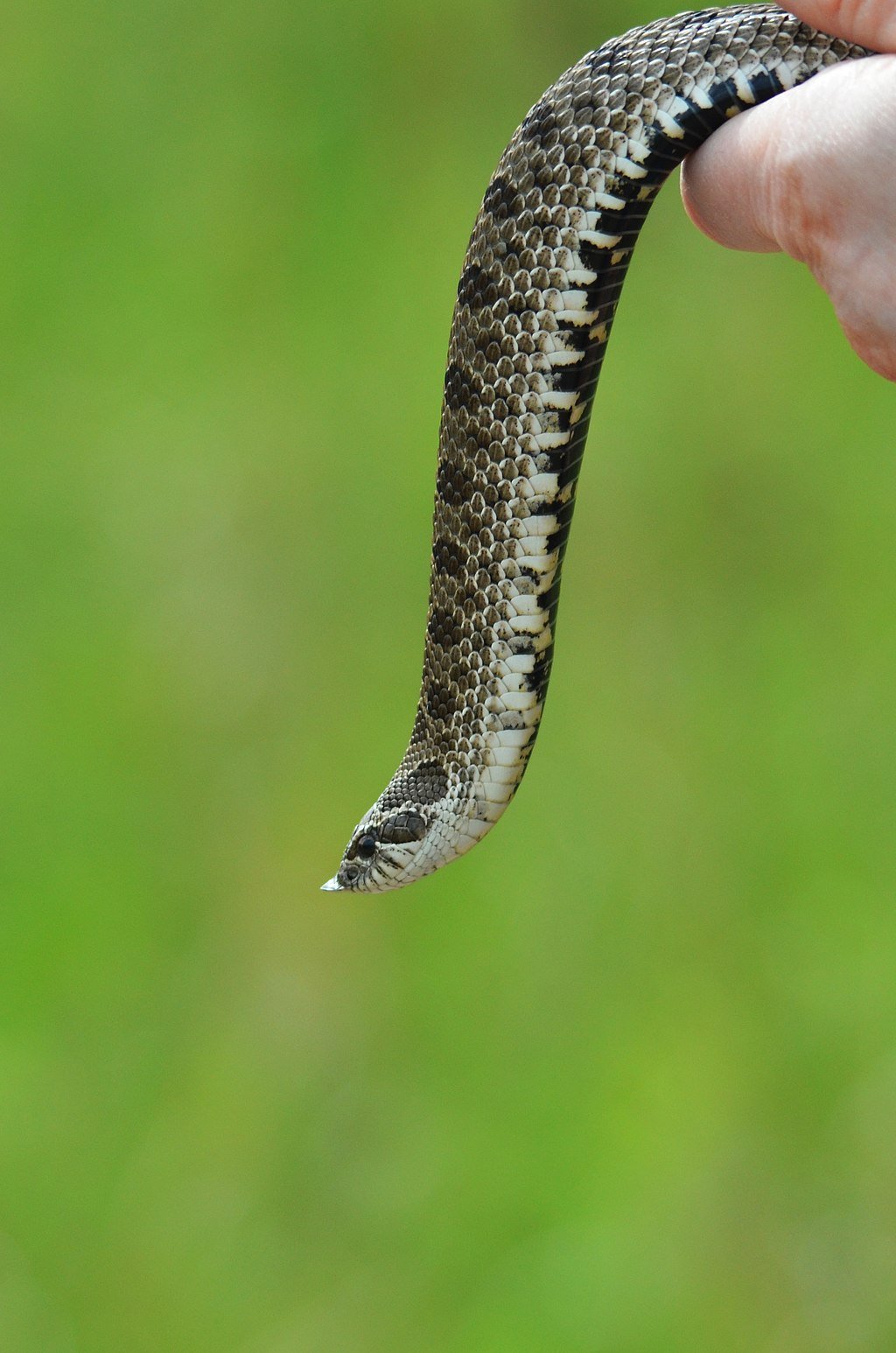
Above, a western hognose snake. Note the surface texture difference between the snake's dorsal and ventral scales. (Image: USFWS Midwest Region from United States, CC BY 2.0 via Wikimedia Commons.)
Can age-old, naturally selected biological designs help solve modern engineering problems? Engineers in the field of biogeotechnics think so.
Bioinspired geotechnical engineering, naturally cross-disciplinary, involves careful examination of biological systems and organisms, extrapolating promising systems into practical and human-scaled designs, and then verifying the performance of those designs in the field.
Its happening at the UC Davis Center for Geotechnical Modeling, where researchers use the facilitys large geotechnical centrifuges for testing the viability of bioinspired designs in particular those focused on the interactions between soils and structures. The CGM is part of the NSF-funded Natural Hazards Engineering Research Infrastructure, NHERI.
Snake bellies are special
For Alejandro Martínez, associate professor of civil and environmental engineering at UC Davis, a promising source of bioinspiration is snakeskin. Neatly enough, the belly scales of certain snakes have evolved to reduce friction as the animal moves in the forward or caudal direction and increase friction in the opposite, or cranial, direction. The ventral skin surface enables the animal to move efficiently through soils and easily slide up a tree without sliding down.
The phenomenon is called frictional anisotropy, or frictional directionality; its a property of a surface that exhibits different friction coefficients depending on the direction of movement. Its a bit like petting a dog: smooth in one direction, rough in the other.
Practical benefits
Martínez thinks surfaces engineered with snakeskin-inspired frictional directionality may improve the strength and efficiency of geotechnical systems such as driven piles, soil nails, anchors for offshore structures, tunnels, and geosynthetics. All these geotechnical elements are loaded in different directions during their use, from installation through service life. For example, low friction is optimal for driving piles, but high friction is vital for anchoring a pile in place.
"Imagine a pile that's easy to install and yet strong enough to support the applied loads, says Martínez.
Currently, no geotechnical structures take advantage of frictional directionality. Piles, for example, are notoriously difficult to install in dense soil. Its a challenge in the field. But imagine a pile thats easy to install and yet strong enough to support the applied loads, says Martínez. With a snakeskin-inspired surface, he says, we get the benefit of a pile that is easier to install as well as firmly anchored for a good foundation.
Engineering and herpetology
For Martínez and his team, the first thing to figure out was snakes. There are more than 3,000 snake species on Earth. Where to start? With a herpetologist, naturally. Martínez explained his idea to Brian Todd, professor in the UC Davis Department of Wildlife, Fish and Conservation Biology. Todd suggested a range of species to examine, enabling Martínez hone in on 30 species of snakes.
Using preserved snake specimens from UC Berkeleys Museum of Vertebrate Zoology, Martínez and his team examined 70 snakeskins in all. They created detailed profiles of each animals ventral skin, including high-resolution 3D scans. The most promising skin geometries were those of the western hognose snake, the parrot snake, and the Saharan horned viper.
The most promising skin geometries were those of the western hognose snake, the parrot snake, and the Saharan horned viper.
One of the important parts of our bioinspired geotechnical work is learning about biology, says Martínez, who has been curious about animals and plants since childhood. We learn a lot from biologists. Bioinspired geotechnical work means reading papers in the biological sciences, going to conferences and ultimately collaborating in research.
For instance, Martínez and his team recently collaborated with Duncan Irschick, biologist with the University of Massachusetts Amherst, and Simon Baeckens, biologist at Ghent University, to make a significant contribution to biological research. Together, the engineers and biologists explored the correlations between the topography of snakeskin and the environment in which the snakes live, using the very dataset of snakeskin scans obtained by Martínez at UC Davis for his biogeotechnics work.
Testing for frictional directionality
After narrowing favorable snakeskin surfaces to three, the next step in the snakeskin project was to test the surface designs in the lab. The researchers idealized the ventral skin geometries for these three snakes, extruded them onto a flat surface, then printed them using a 3D printer.
With the snakeskin scans, we realized that many of them had an asymmetrical sawtooth pattern. With the 3D printed surfaces, we exaggerated the snakeskin patterns, making surfaces stronger than the typical surfaces of concrete or steel, says Martínez. So, with the snakeskin surface patterns, we can make directionally dependent, stronger surfaces."
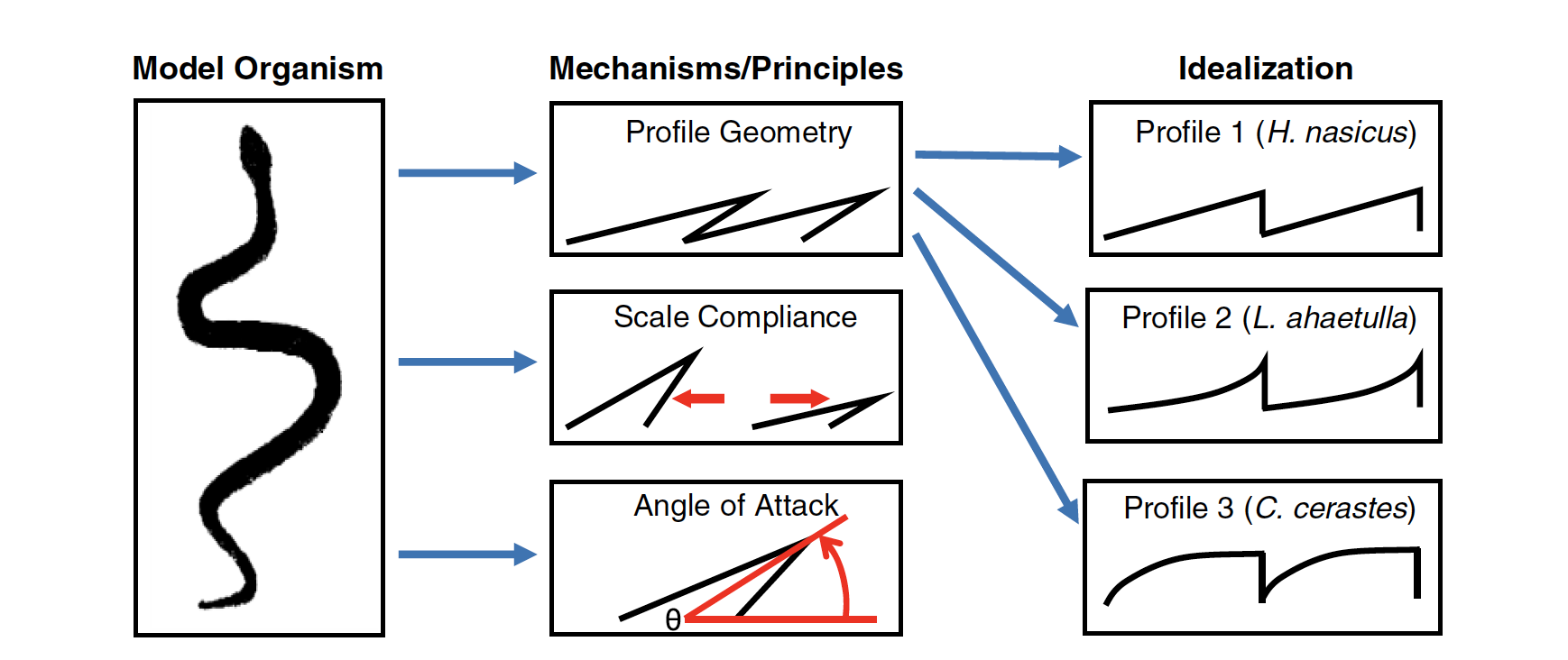
Geometries of ventral scales from three promising snake species: western hognose snake (top), parrot snake, and Saharan horned viper. (Image: Alejandro Martínez)
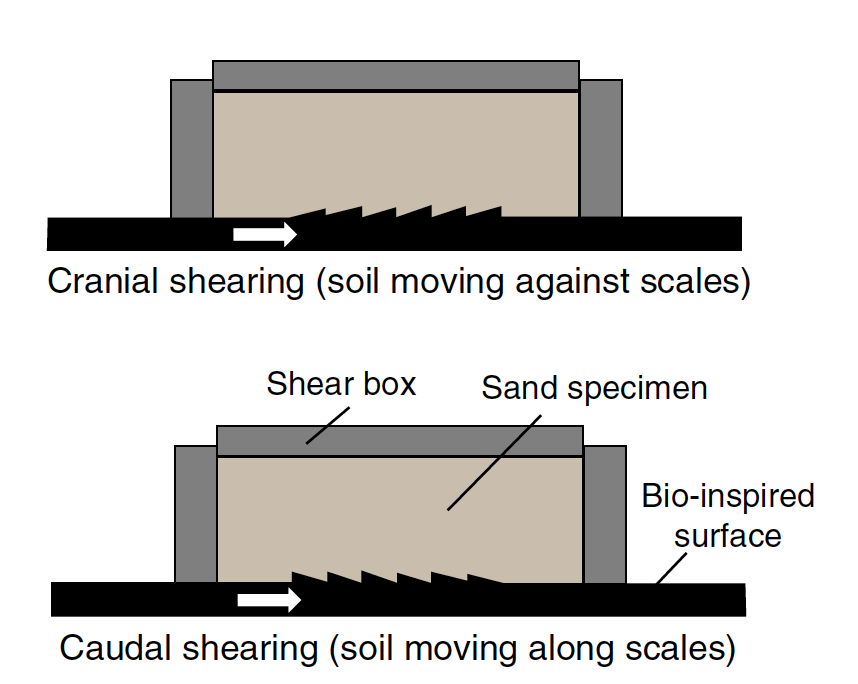
Cranial and caudal testing configurations in the shear box tests. (Image: Alejandro Martínez)
The team conducted interface shear box tests with the snakeskin-inspired surfaces, using sand specimens to understand and assess the frictional behavior of the surfaces. The results confirmed that yes, these new surfaces exhibited a prevalent anisotropic behavior: shearing against the scales mobilized greater friction than shearing along the direction of the scales. They repeated a subset of the tests using particle image velocimetry (PIV) to quantify soil deformations near the interface. These high-resolution images helped the researchers understand the nature of soil deformations at the granular level.
It turns out that the hognose-snake-inspired surface exhibited the highest level of frictional directionality. Further tests on the geometrical characteristics of its scales revealed optimal ratios of scale height and length for increasing the shear strength and frictional directionality of the soil-structure interfaces.
Testing models in the centrifuge
Next, Martínezs team created model piles with snakeskin-inspired surfaces and conducted a series of load tests using the 9-meter radius centrifuge at the UC Davis Center for Geotechnical Modeling, an apparatus that can simulate g-forces up to 75 times Earths gravity.
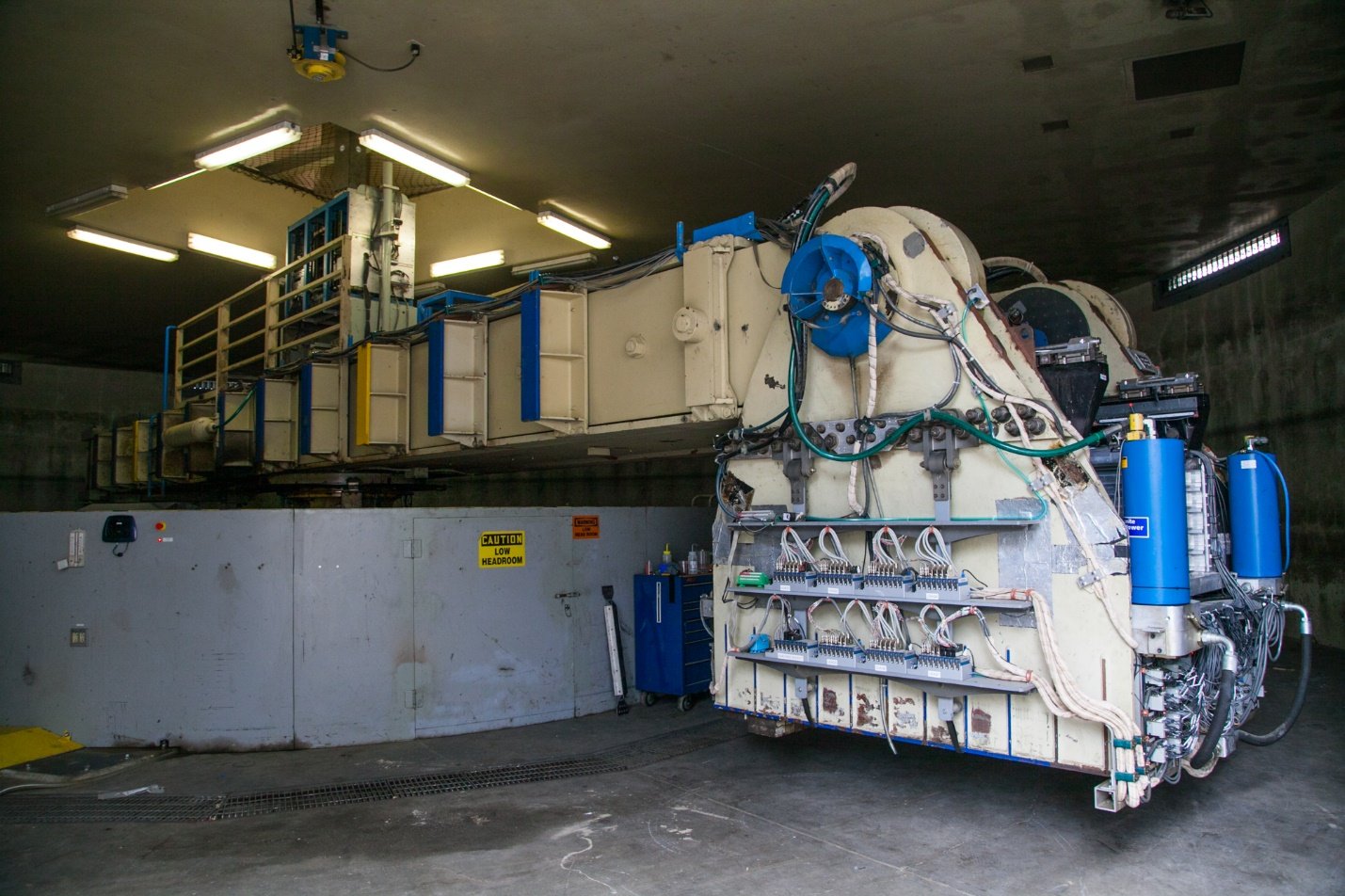
The 9-meter radius centrifuge at the UC Davis Center for Geotechnical Modeling. (Image: UC Davis Center for Geotechnical Modeling)
Geotechnical engineers use the powerful acceleration of large-scale centrifuges to artificially increase gravity and stress on soils. The centrifuges acceleration mimics the high-stress environment of deep soils, creating realistic soil behavior at increasing depths. Soils are granular materials and their behavior depends on the effective stress, Martínez explains. The top meter of soil behaves very differently than soils deeper in the ground.
With specialized sensors and cameras, researchers can understand soil behavior deep underground, under stresses relevant to infrastructure applications.
Martínezs model piles, made of stainless steel, were 19mm in diameter and 350mm long; the snakeskin-inspired surface was machined onto the piles. The piles were placed in various densities of sand and spun at 40g in the centrifuge. At 40g gravity increased by 40 times the stress under one meter is equivalent to that under 40 meters of soil.
The centrifuge tests confirmed what the lab tests indicated: even under high pressure and considering pile installation effects, bioinspired surfaces had lower friction during installation and greater friction during pullout. In fact, the skin friction during pullout was over 500% greater than that of an untextured pile.
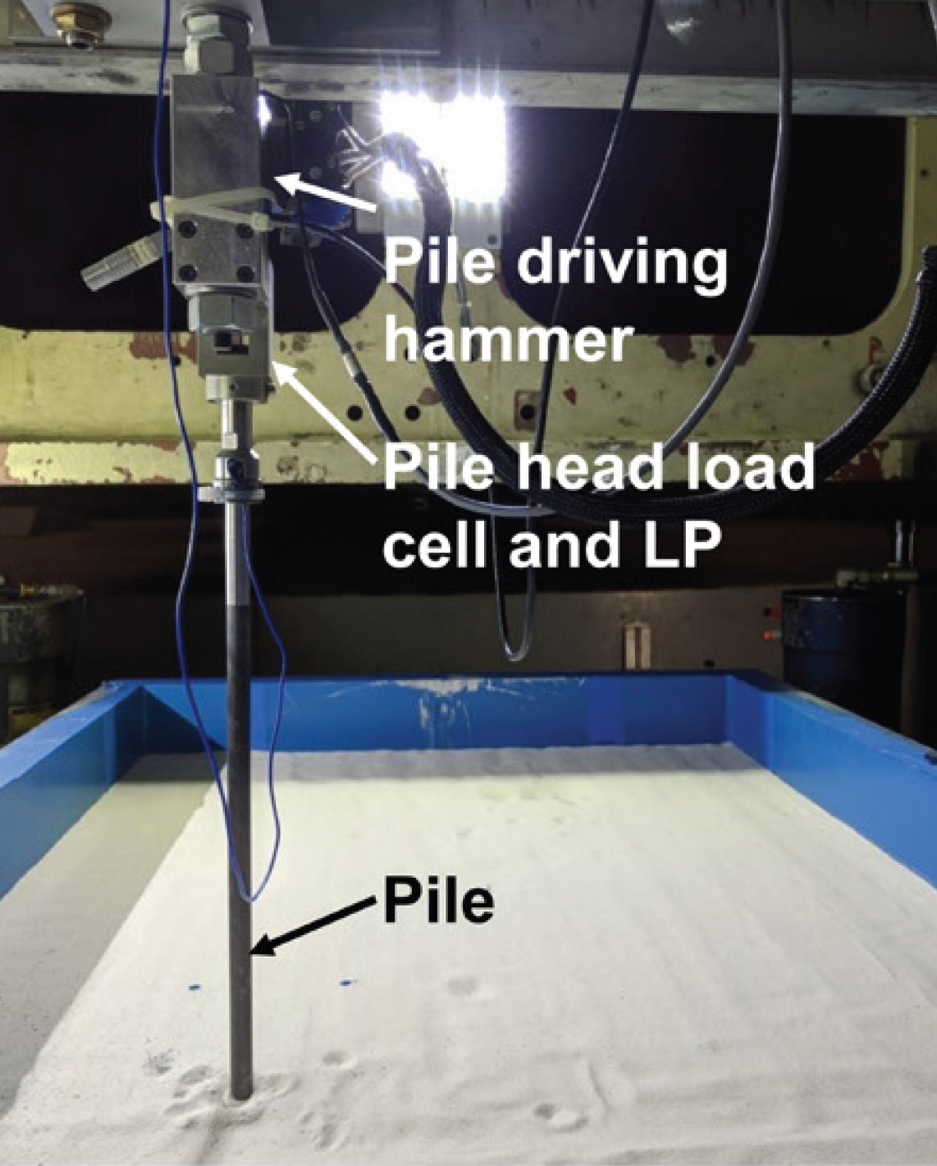
Above: Photograph of pile driving and pullout system in the centrifuge test box. (Image: Alejandro Martínez)
Right: Snakeskin-inspired pile used in centrifuge tests. Tests were performed on piles with differing asperity lengths and heights, with the taller asperities consistently mobilizing greater skin friction loads. (Image: Alejandro Martínez)
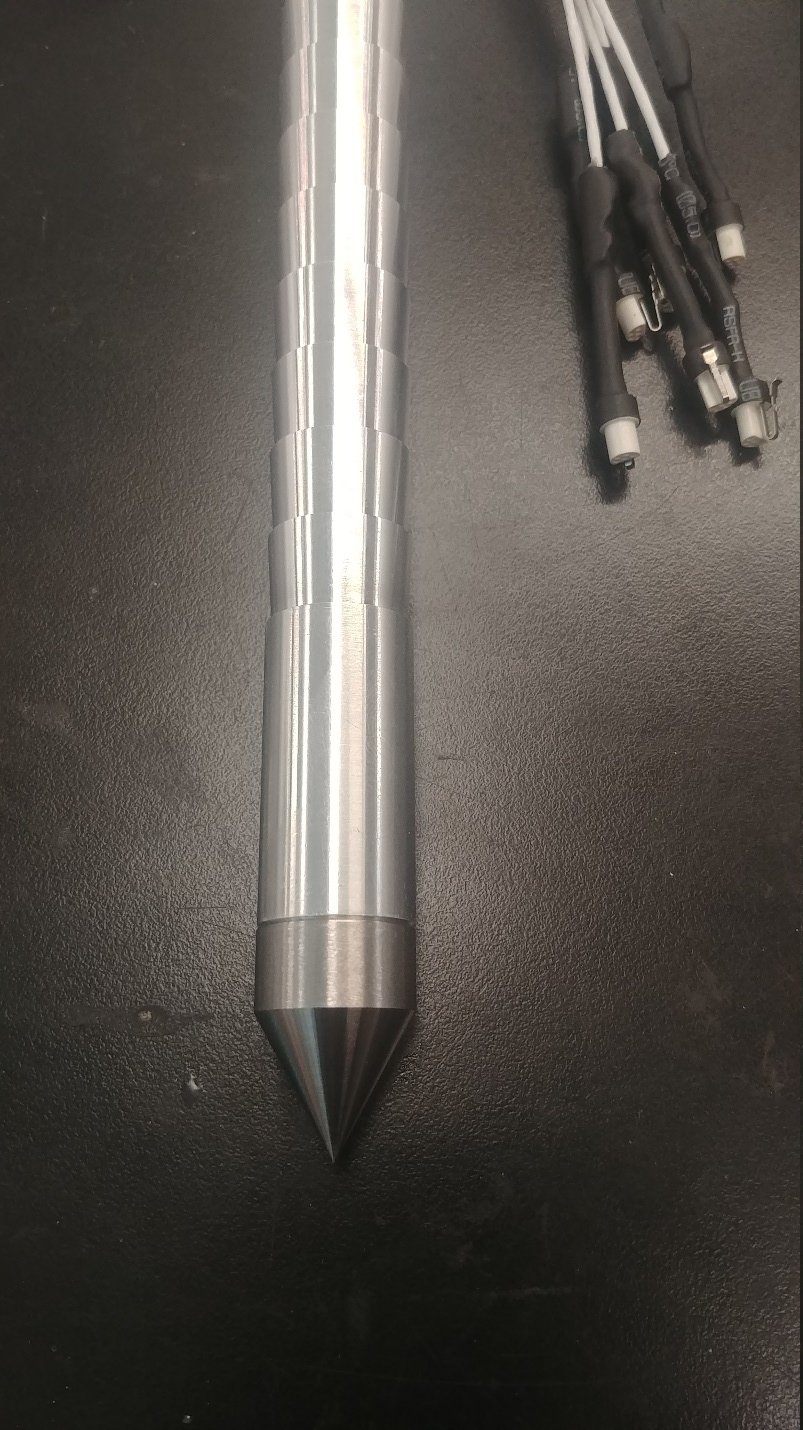
Martínezs snakeskin research is part of a larger, NSF-funded Engineering Research Center called the Center for Bio-mediated and Bio-inspired Geotechnics. CBBGs mission is to develop innovative technologies to serve civil engineering industry, and CBBGs industry board consults with researchers like Martínez, providing insight into the practicalities of their research.
In August 2022, Martínez began conducting field tests, using 18-foot-long soil nails with different snakeskin-inspired surfaces. The tests were conducted in silty and sandy deposits and the capacity of the snakeskin-inspired soil nails will be compared to that of conventional nails.
So far, the field test results indicate the snakeskin-inspired soil nails have greater capacities than the conventional ones. Also, the height and length of the asperities affect the nail capacity; however, this effect depends on the soil type. In the future, Martínez hopes to work with practitioners to install snakeskin-inspired soil nails and foundations at industry job sites to investigate their long-term performance.
Bioinspired geotechnical tools are a promising innovation. Looking ahead, Martínez will examine how snakeskin-inspired piles perform in clay soils, and hell run field tests on instrumented piles to understand local load-transfer mechanisms. Field tests may confirm what Martínezs lab and centrifuge tests have shown: that bioinspired piles, soil nails, and anchors are easier to drive in and more difficult to pull out.
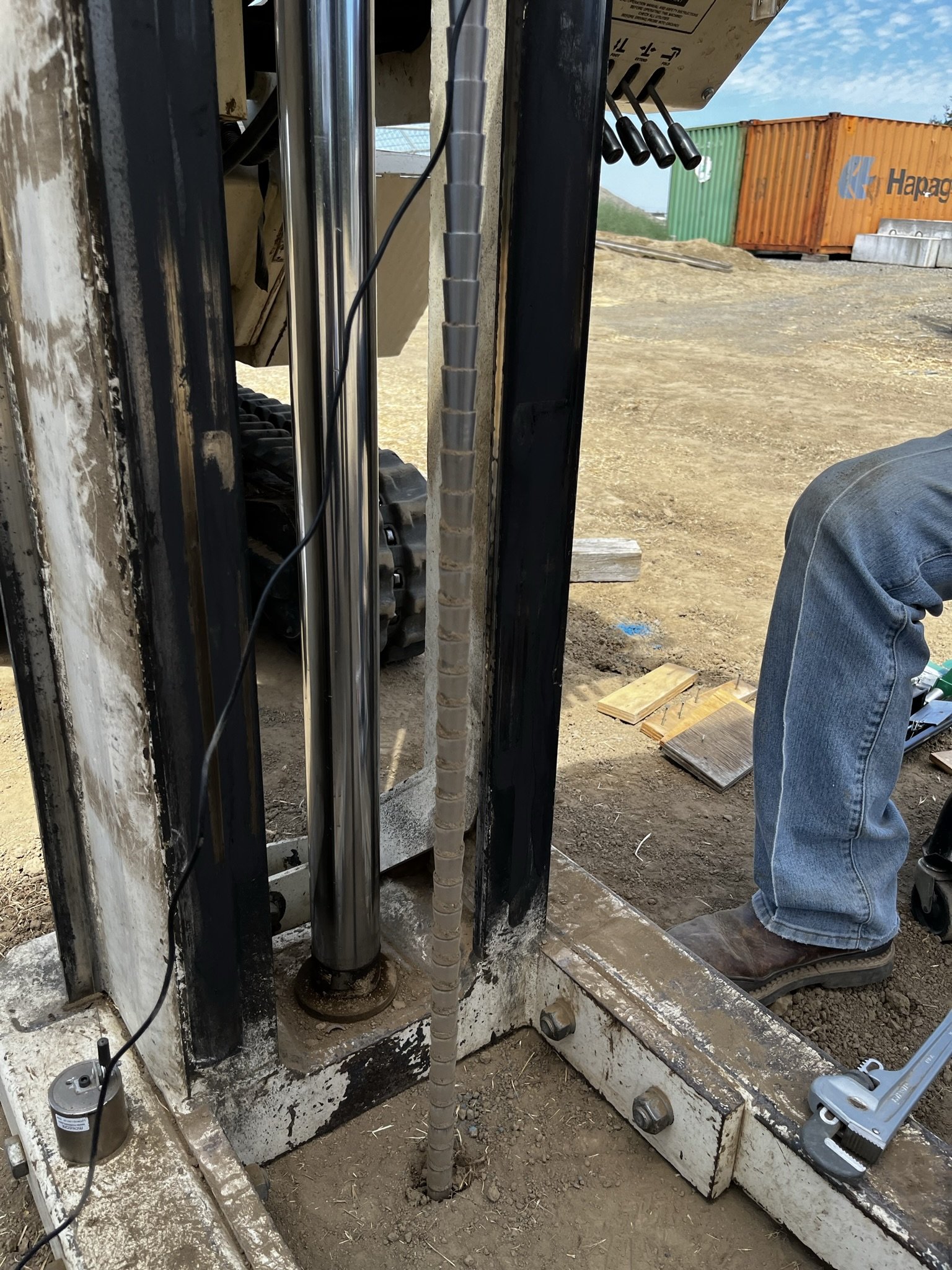
Setup for field test of snakeskin-inspired soil nails. Photo shows a soil nail with an asperity height of 2 mm and length of 12 mm installed in silty soil to a depth of 18 ft. (Image: Alejandro Martínez)
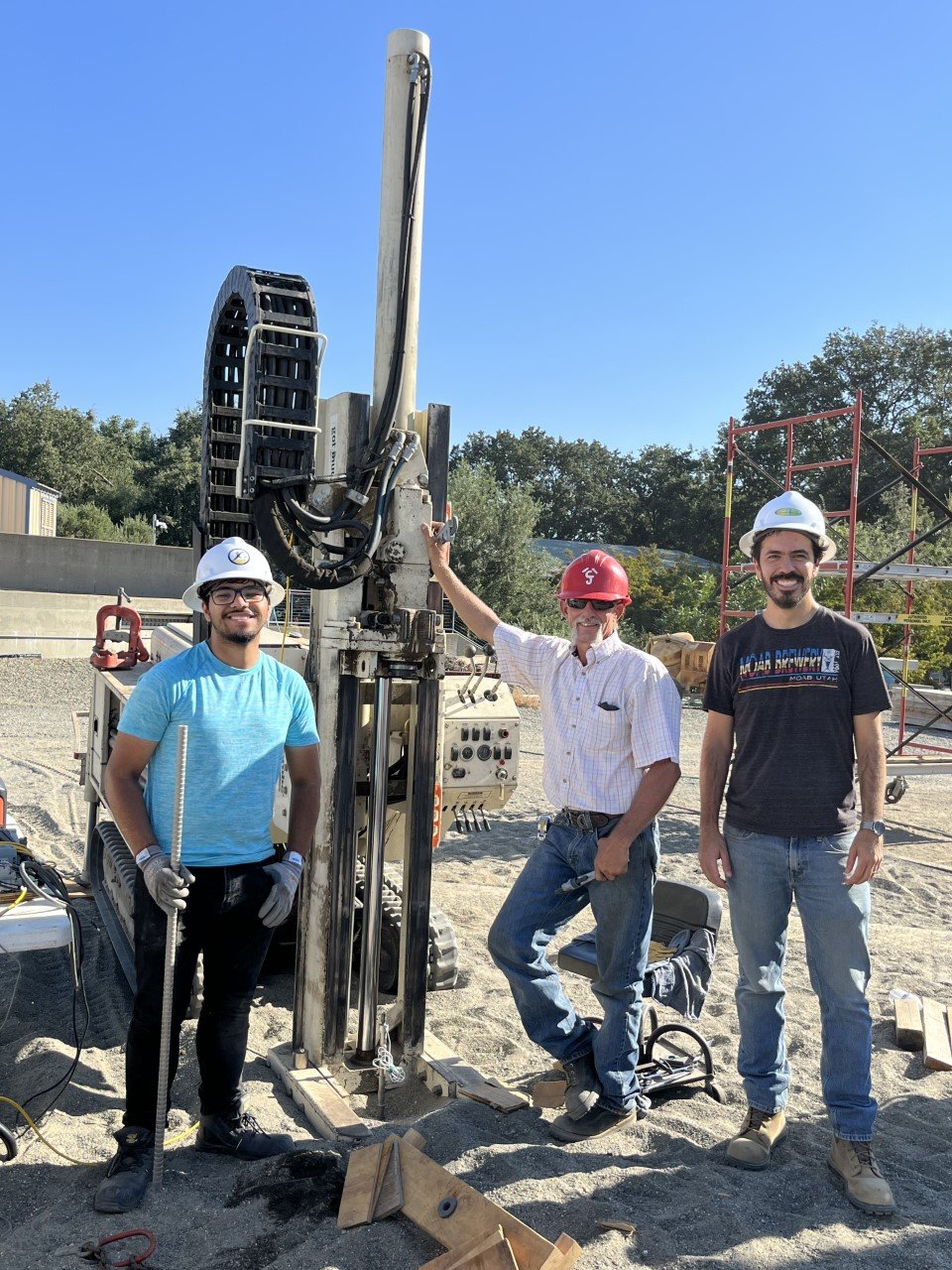
In August 2022, Martínez and his team conducted the first field tests of his bioinspired surfaces using 18-foot-long soil nails. From left: Fabian Zamora, undergraduate researcher, Chad Justice, CGM staff, and Alejandro Martinez, project PI. (Image: Alejandro Martínez)
References
Martínez, A., Palumbo, S., & Todd, B. D. (2019). Bioinspiration for anisotropic load transfer at soilstructure interfaces. Journal of Geotechnical and Geoenvironmental Engineering, 145(10), 04019074. https://doi.org/10.1061/(ASCE)GT.1943-5606.0002138
Martínez, A., & OHara, K. B. (2021). Skin friction directionality in monotonically-and cyclically-loaded bio-inspired piles in sand. Deep Found. Inst. J, 15(1). https://doi.org/10.37308/DFIJnl.20200831.222
O'Hara, K.B. and Martínez, A. "Load transfer directionality of snakeskin-inspired piles during installation and pullout in sands." Accepted for publication in J. Geotech. Geoenv. Eng. https://doi.org/10.1061/(ASCE)GT.1943-5606.0002929
Martinez, A., Nguyen, D., Basson, M.S., Medina, J., Irschick, D.J, and Baeckens, S. (2021). "Quantifying surface topography of biological systems from 3D scans." Methods Ecol. Evol. 12, 12651276. https://doi.org/10.1111/2041-210X.13603
Martínez, A., Dejong, J., Akin, I., Aleali, A., Arson, C., Atkinson, J., ... & Zheng, J. (2022). Bio-inspired geotechnical engineering: principles, current work, opportunities and challenges. Géotechnique, 72(8), 687-705. https://doi.org/10.1680/jgeot.20.P.170







